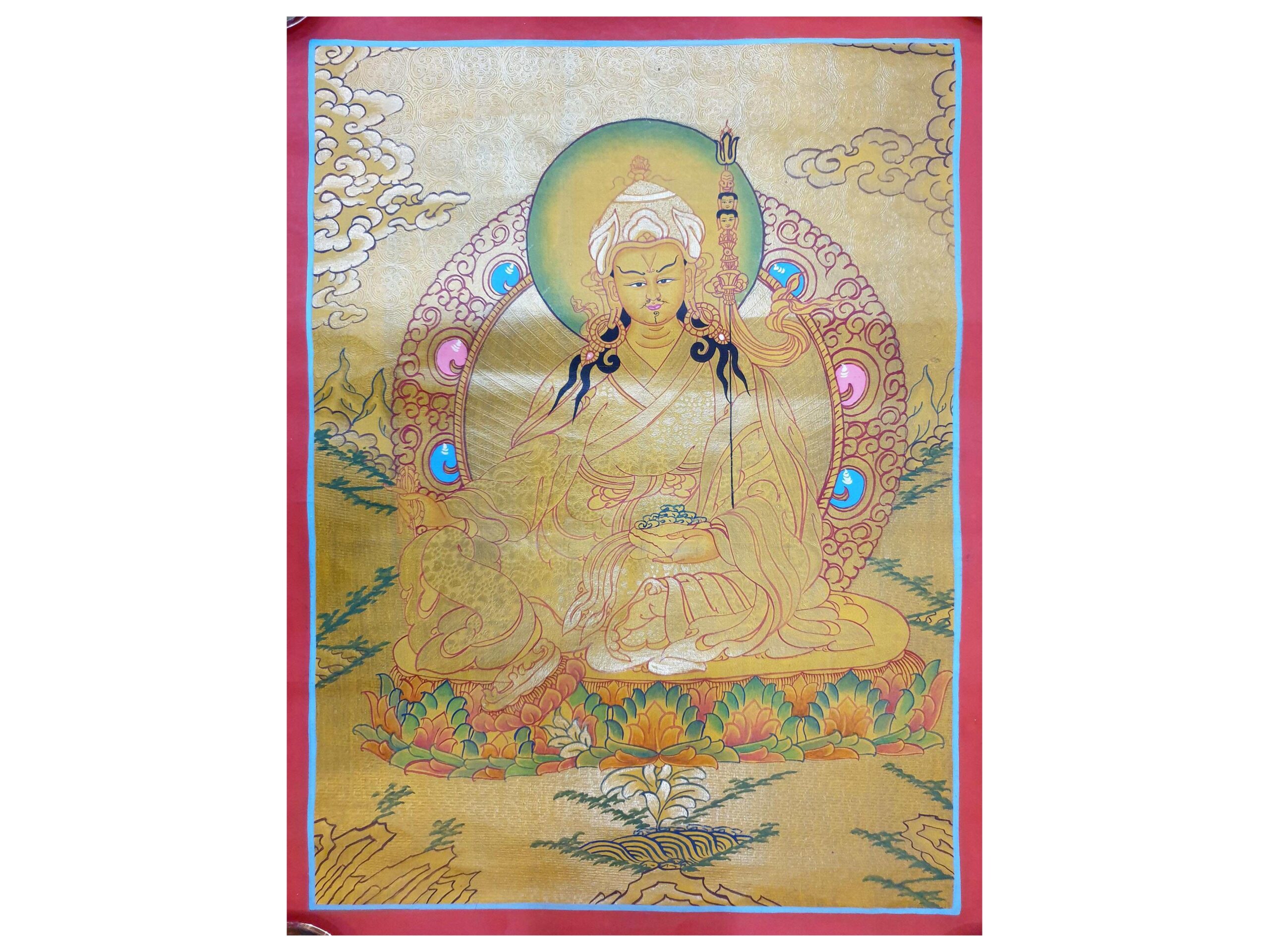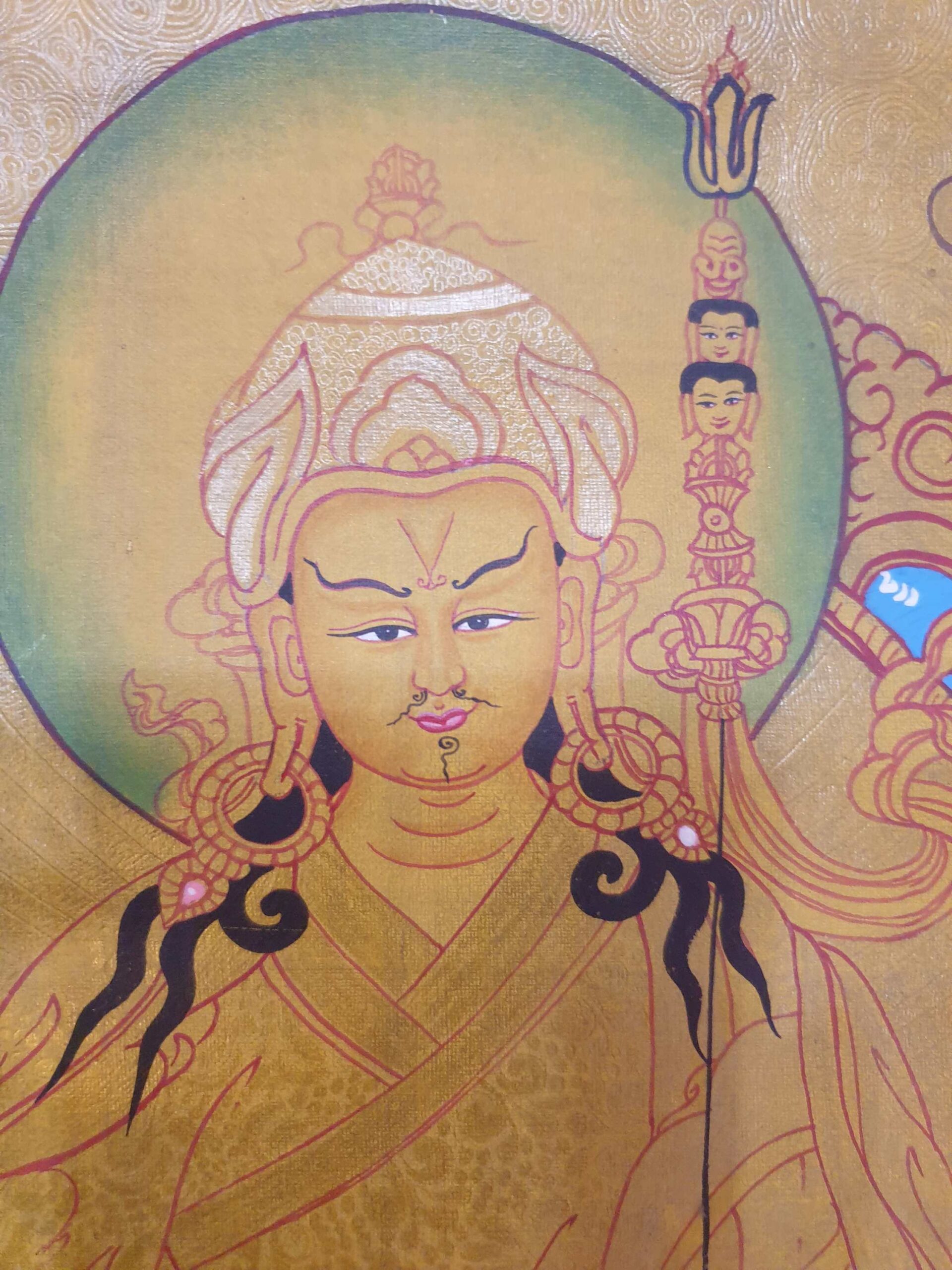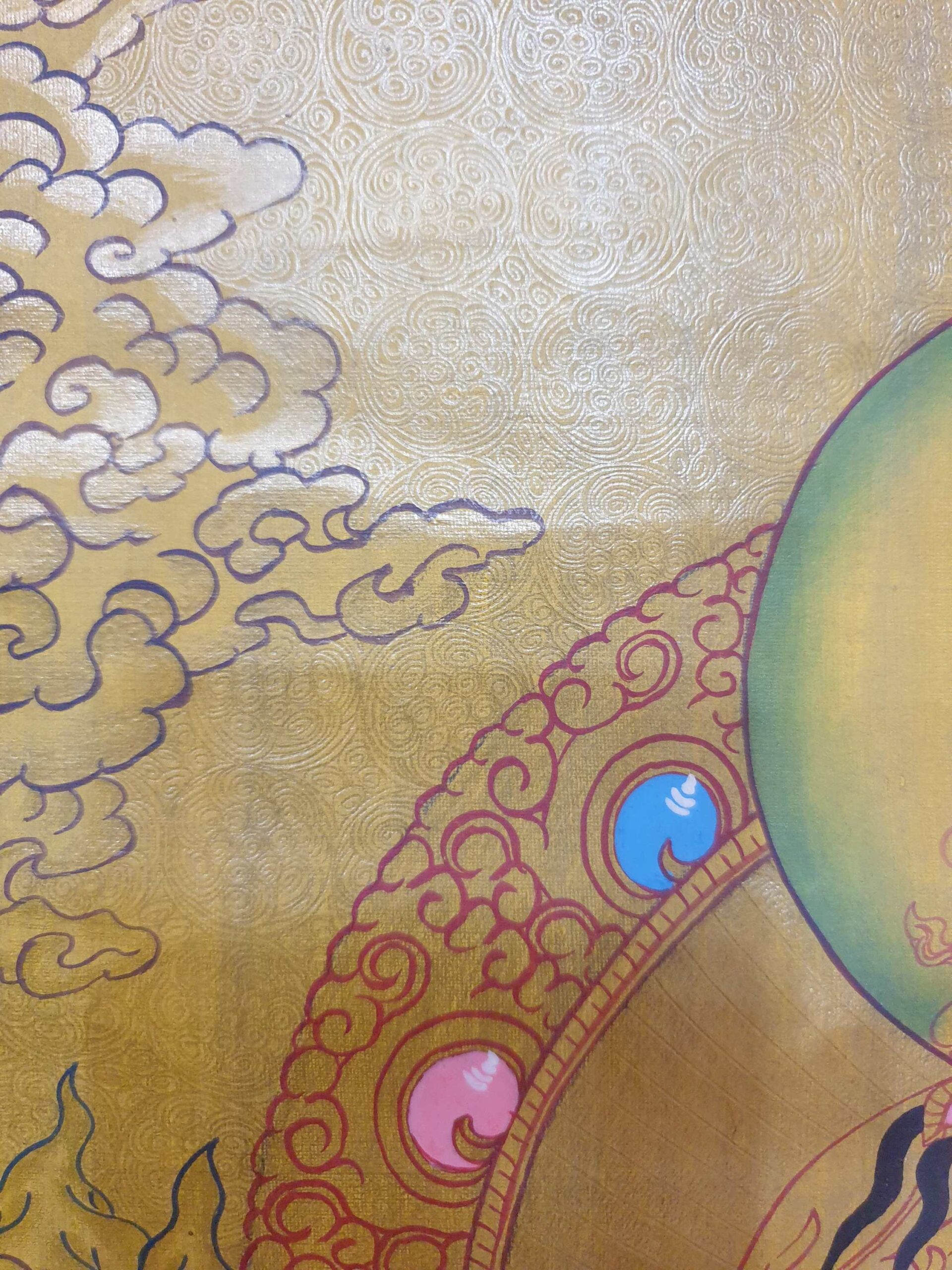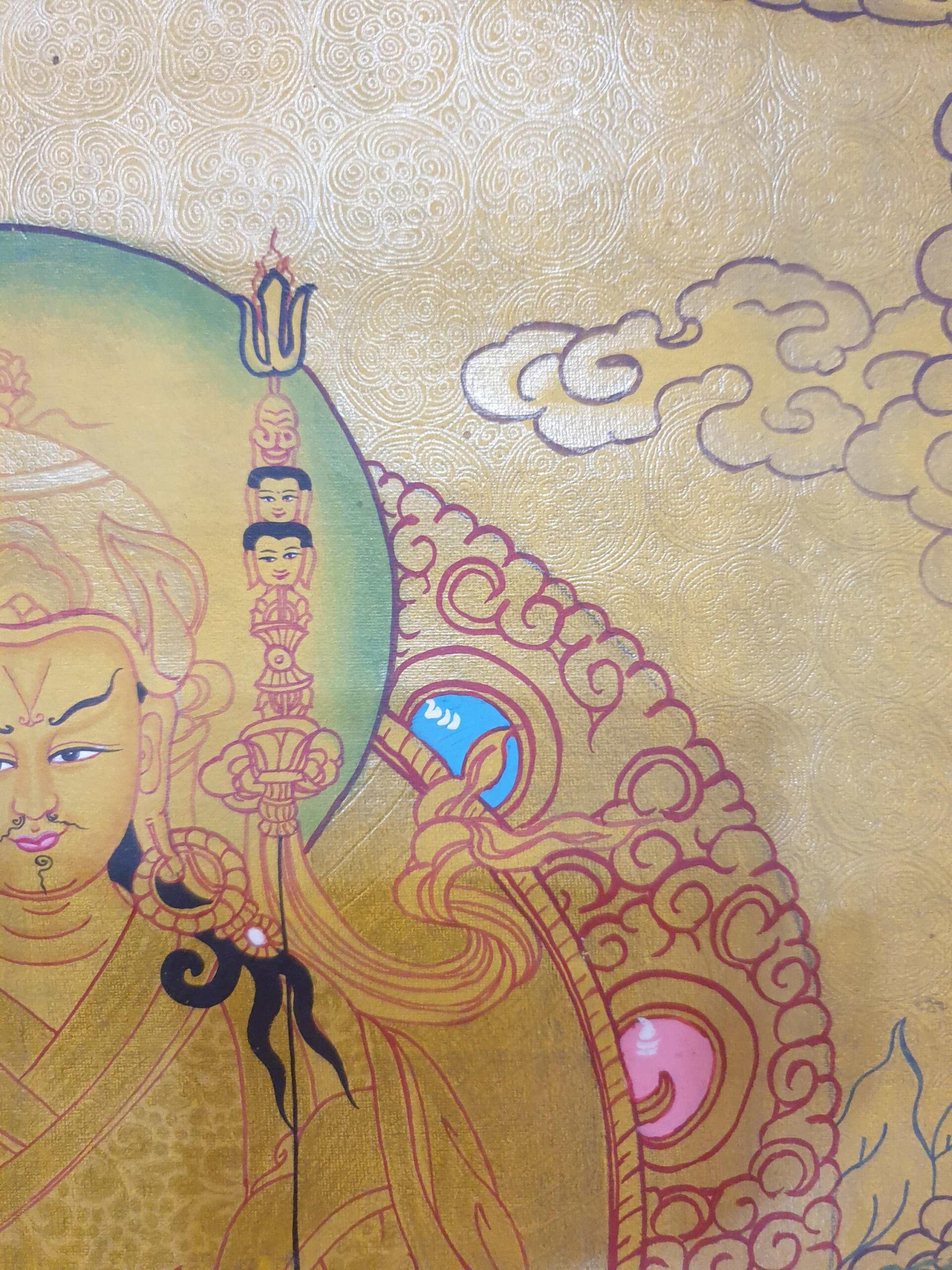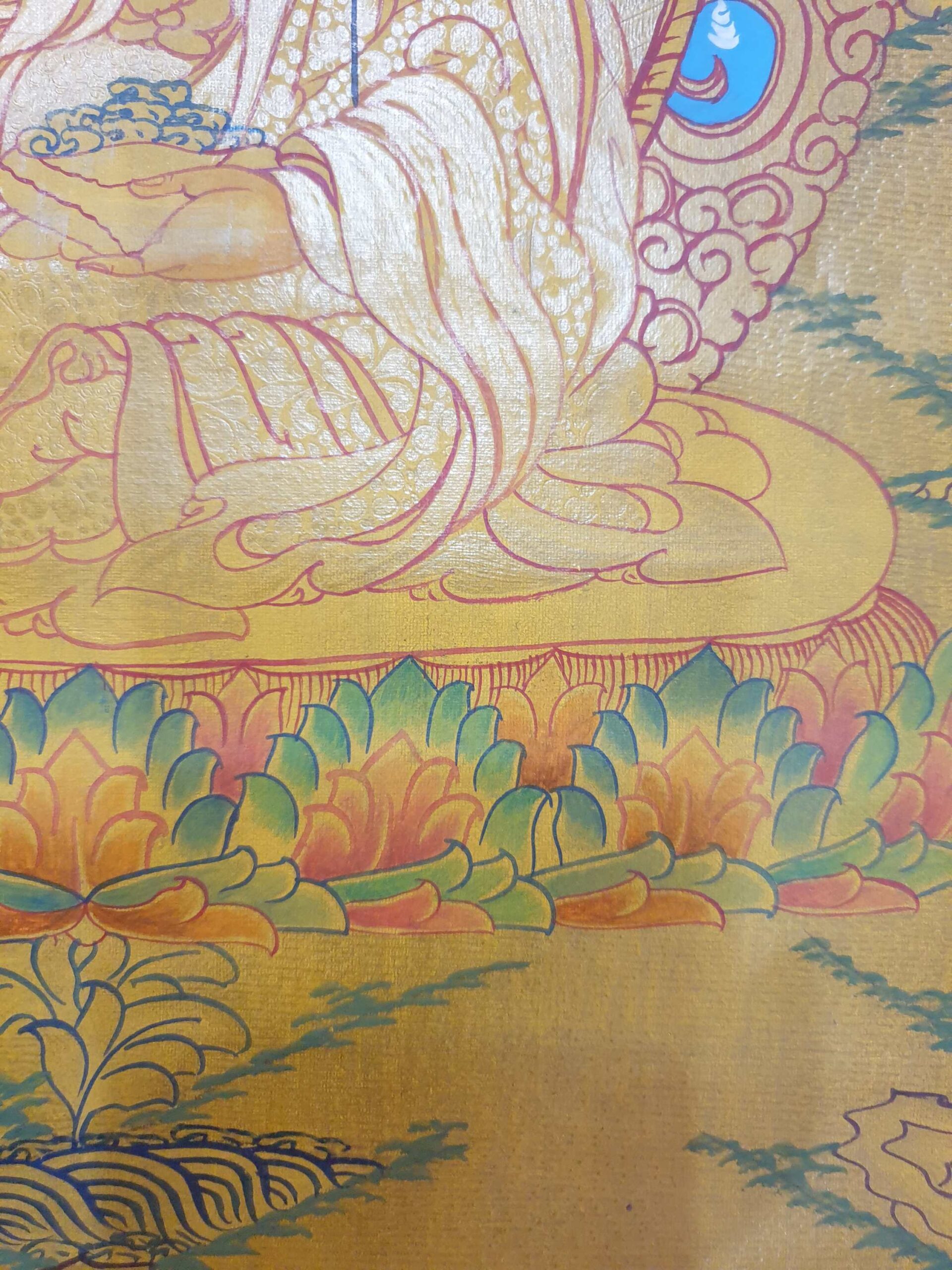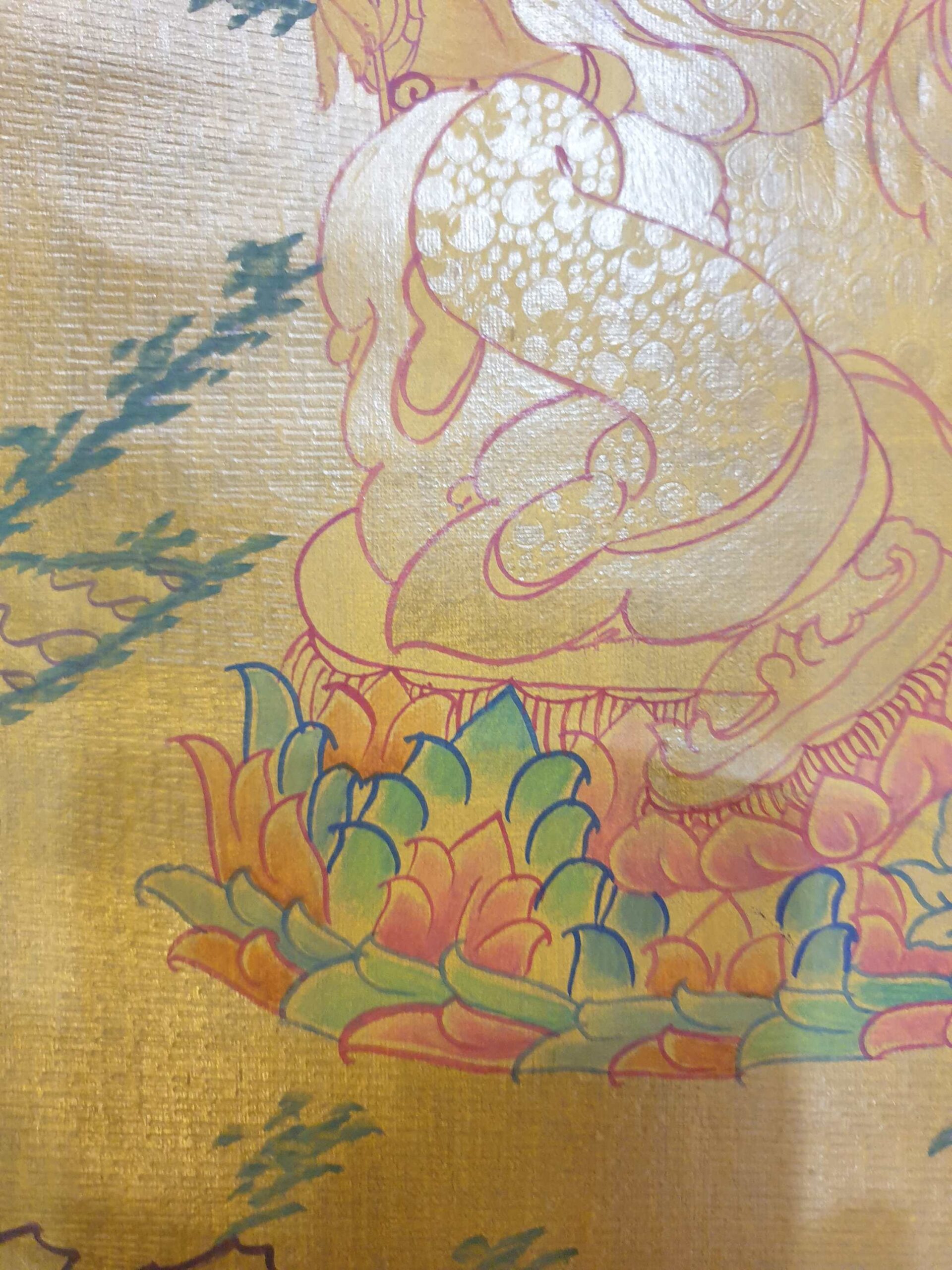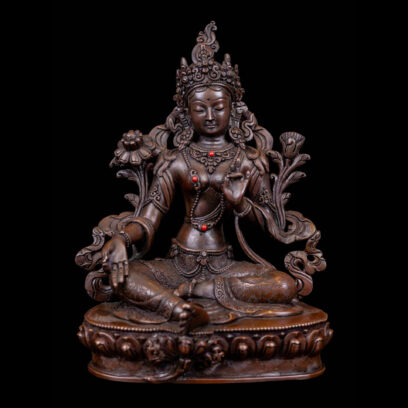Thangka Painting of Padmasambhava Real Gold, Guru Rinpoche
Item Code: HME23449
Weight: 100 Grams
Dimensions: 39 x 29 cm (Approx. 15.5 x 11.5 inches)
Material: Cotton Canvas with Natural Color
Availability: Available
Padmasambhava: The Lotus-Born Guru
Padmasambhava, also known as Guru Rinpoche, is a revered figure in Tibetan Buddhism, often regarded as the second Buddha by followers of the Nyingma school.
- Historical Background:
- Padmasambhava, meaning “the Lotus-Born,” was a sage guru from Oddiyana, a region that is believed to be in modern-day Pakistan or Afghanistan.
- In the 8th century, he is credited with introducing Vajrayana Buddhism to Tibet, Bhutan, and surrounding regions, transforming the spiritual landscape of these countries.
- Philosophical Significance:
- Padmasambhava’s teachings emphasize the non-dual nature of reality, transcending concepts of duality to reach a state of spiritual enlightenment.
- He is revered as the embodiment of wisdom and compassion, and his teachings guide followers to overcome ignorance and attain ultimate liberation.
- The mantra associated with him embodies the idea that the ultimate truth is beyond conceptual thinking and lies in the unborn sphere of all phenomena.
- Other Names and Titles:
- Padmasambhava is also called Guru Rinpoche, meaning “Precious Guru,” and Lopon Rinpoche, which signifies his respected status as a spiritual teacher.
- In Tibet, he is sometimes referred to as Padum, underscoring his importance in Tibetan Buddhism.
Introduction to Thangka Art
A thangka is a vibrant and intricate Tibetan Buddhist painting, carefully crafted to visually express profound spiritual teachings.
- Artistic Significance:
- Padmasambhava is depicted in this thangka with real gold accents, emphasizing his sacred nature and elevating his presence.
- Thangkas are often hand-painted with meticulous detail on cotton canvas or silk, and they depict various Buddhist deities, sacred scenes, and mandalas. This particular Padmasambhava thangka exemplifies both artistic and spiritual craftsmanship.
- Storage and Preservation:
- Traditionally, thangkas are unframed and rolled up for storage, resembling ancient scrolls. To preserve their delicate nature, they are often mounted on textile backings and covered with a silk cover.
- Proper care is necessary to maintain the thangka’s integrity over time, particularly by storing it in a dry environment.
This Padmasambhava Thangka is not only a piece of spiritual artwork but also a profound reminder of his transformative teachings, inviting practitioners and admirers to reflect on the deeper wisdom of Vajrayana Buddhism. It serves as an ideal addition to meditation spaces, altars, or collections of sacred art.
